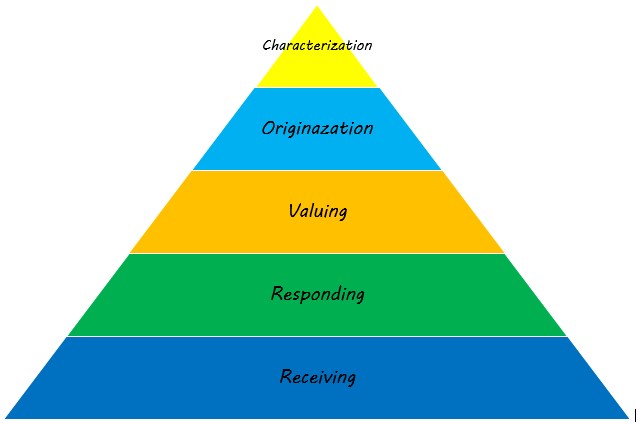Affective Domain of Learning
Most people think of learning as an intellectual or mental function. However, learning is not a just a cognitive (mental) function. You can also learn attitudes, behaviors, and physical skills. These different categories create three domains of learning. These three domains of learning can be categorized as cognitive (knowledge), psychomotor (skills) and affective (attitudes).
Benjamin Bloom
The affective domain is one of three domains in Bloom’s Taxonomy.
In the 1950’s, Benjamin Bloom headed a group of educational psychologists (including David Krathwohl) whose goal was to develop a system of categories of learning behavior to assist in the design and assessment of educational learning. The group identified three domains of learning.
- Cognitive (thinking)
- Affective (feeling)
- Psychomotor (doing)
The group focused on the cognitive domain which involves knowledge and the development of intellectual skills. In 1956, they published Taxonomy of educational objectives: The classification of educational goals. Handbook I: Cognitive domain.
The affective domain was later addressed in 1965 in Taxonomy of educational objectives: Handbook II: Affective domain (Krathwohl, D.R., Bloom, B.S., and Masia, B.B.).
Affective Domain
The affective domain involves our feelings, emotions, and attitudes. This domain includes the manner in which we deal with things emotionally, such as feelings, values, appreciation, enthusiasms, motivations, and attitudes. This domain is categorized into 5 subdomains, which include:
- Receiving
- Responding
- Valuing
- Organization
- Characterization
Internalization
This domain forms a hierarchical structure and is arranged from simpler feelings to those that are more complex. This hierarchical structure is based on the principle of internalization. Internalization refers to the process whereby your affect toward something goes from a general awareness level to a point where the affect is internalized and consistently guides or controls your behavior. Therefore, with movement to more complexity, you become more involved, committed, and internally motivated.
Affective Domain Categories
There are five levels in the affective domain moving from the lowest order to the highest:
Receiving – involves passively paying attention and being aware of the existence of certain ideas, material, or phenomena.
Responding – actively participating in the learning process. You are not only aware of a stimulus, but reacting to it in some way.
Valuing – ability to see the value or worth of something and express it.
Organizing – Putting together different values, information, and ideas then relating them to already held beliefs to create your own unique value system.
Characterizing – Acting consistently in accordance with the values you have internalized.
Affective Domain Described
Receiving
Receiving is the lowest level of the affective domain. It is simply the awareness of feelings and emotions. It involves passively paying attention and being aware of the existence of certain ideas, material, or phenomena. Without this level, no learning can occur. If information is never received and cannot be remembered.
Examples: Listening attentively to someone, watching a movie, listening to a lecture, watching waves crash on the sand.
Responding
This level involves actively participating in the learning process. You are not only aware of a stimulus, but you react or respond to it in some way.
Examples: Having a conversation, participating in a group discussion, giving a presentation, complying with procedures, or following directions.
Valuing
Valuing is the ability to see the worth of something and express it. Valuing is concerned with the worth you attach to a particular object, phenomenon, behavior, or piece of information.
This level ranges from simple acceptance to the more complex state of commitment. Simpler acceptance may include your desire for a team to improve its skills, while more complex level of commitment may include taking responsibly for the overall improvement of the team.
Examples: Proposing a plan to improve team skills, supporting ideas to increase proficiency, or informing leaders of possible issues.
Organizing
Organizing involves putting together different values, information, and ideas then relating them to already held beliefs to bring it into an internally consistent philosophy. Essentially, it is ability to prioritize one value over another and create a unique value system. The focus of this level is on comparing, relating, and assessing values to create that unique value system.
Examples: Spending more time studying then playing sports, recognizing the need for balance between work and family, or prioritizing time effectively to meet goals.
Characterizing
This is the highest of the affective domain. It is about internalizing values. It means acting consistently in accordance with the set of values you have internalized and your characterization or philosophy about life. Essentially, you internalize values and let them control or guide your behavior.
Examples: You spend time with your family, you reframe from using profanity, and you make friends based on personally and not looks.

